Pictures taken during Surgical Removal of a Bladder Stone
One of the most common misconceptions in tortoise keeping is that tortoises come from a dry arid environment and so do not require water. This couldn't be further from the truth. Hatchling and juvenile tortoises kept in captivity under lamps require access to fresh water at all times and should be bathed every day, every other day at least. Unfortunately this is rarely relayed to new keepers and we regularly see and hear of the formation of bladder stones in captive hatchlings, juveniles and even adult tortoises, due to water not being offered, lack of bathing, not being able to burrow down to reduce loss of water through evaporation, not being able to cool down properly etc. This is undoubtedly one of the most frequent causes of death in captive tortoises, yet is easy to avoid.
The bladder stone in this tortoise was too large to pass and the only solution was to remove it using surgery. Many tortoises are not so lucky and it's too late before it's realised a bladder stone has formed.
1. The tortoise has been anaesthetised and is ready for surgery
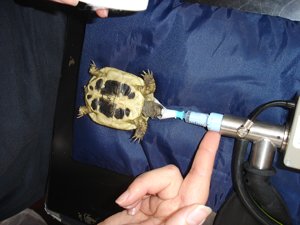
2. The shell has been removed and the bladder opened showing the stone
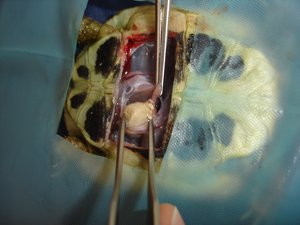
3. The bladder and coelomic membrane are closed
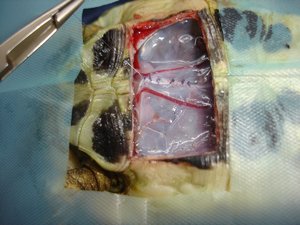
4. The shell is sutured back in place and a gel used to fil in the gaps
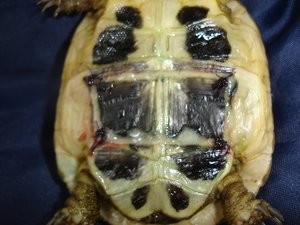
5. A sealant is used to hold every thing in place
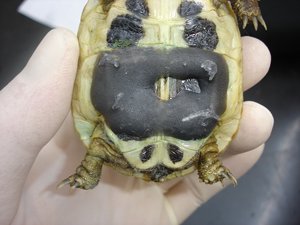
PLEASE NOTE: Young tortoises should be bathed on a daily basis to maintain hydration.
PLEASE NOTE: It is a common misconception that excessive calcium/limestone flour will have no ill-effects as it will merely pass through. This is not the case, it can result in life-threatening calcification and bladder stones
These photographs may not be copied or distributed without the expressed permission of Kevin Eatwell, BVSc (hons) DZooMed (Reptilian) MRCVS, RCVS recognised specialist in Zoo and Wildlife Medicine
All Rights Reserved Copyright © Tortoise Protection Group




